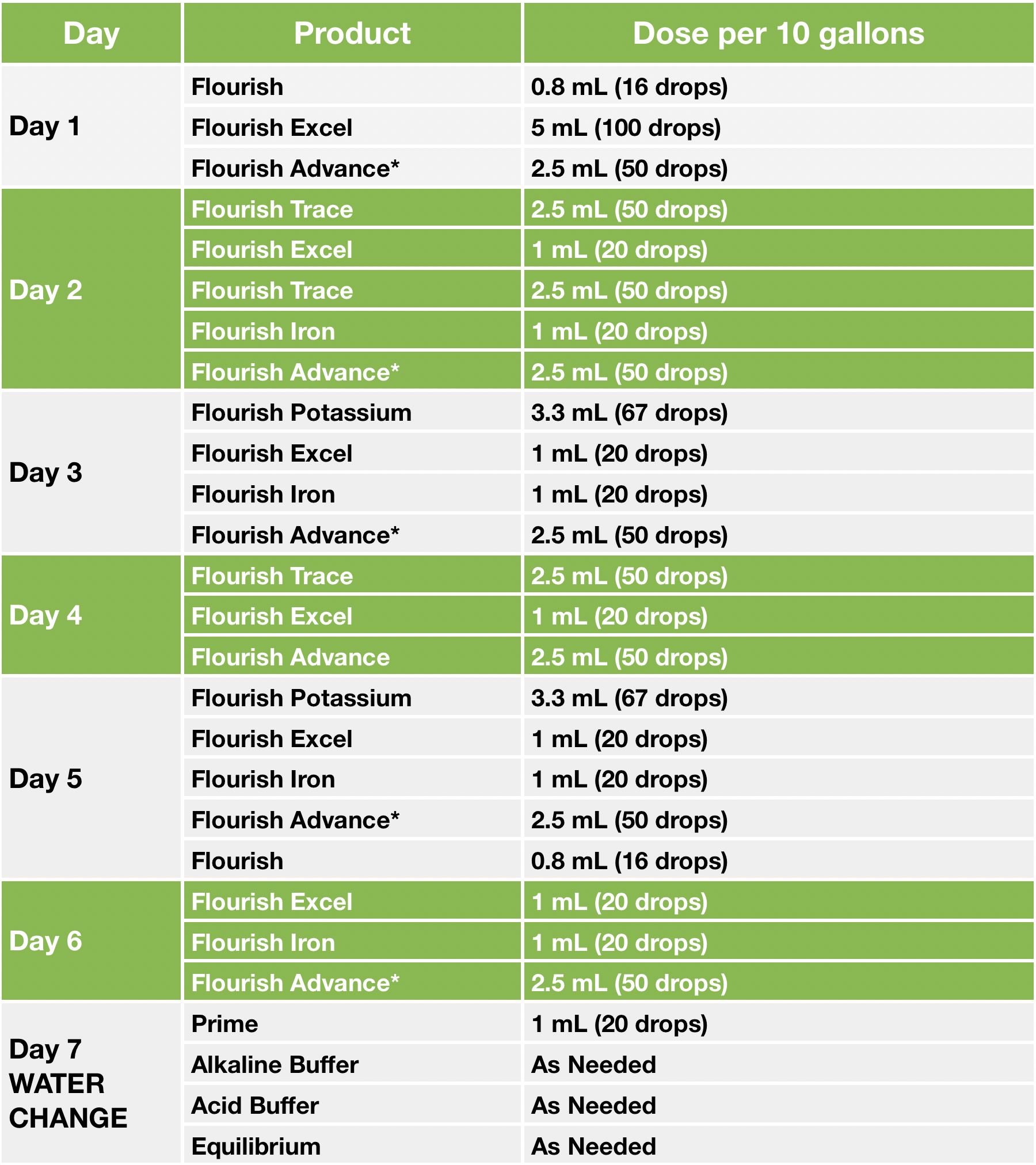New aquariums face a variety of challenges, and the best thing to do to resolve most of them is ensure tank stability and avoid sudden changes. Patience, consistency, and time are your friends here!
The Big Three
When attempting to replicate the natural environment of fish and plants, some of the most important water parameters are pH, alkalinity (KH), and GH. Here’s how to maintain these vital water parameters!
pH
pH is a measure of how acidic or alkaline your water is. Low numbers (less than 7) are acidic, while high numbers (above 7) are alkaline. Your fish and plants have a preferred range, and they would like their pH to be as unstable an unchanging as possible within this range. Use buffers like Acid Buffer™ and Alkaline Buffer™ to alter and maintain your pH.
Alkalinity (KH)
Alkalinity is a measurement of how resistant your pH is to change, and depends on the concentration and strength of acids and buffers in your water. High alkalinity means your pH is very solid, but will tend to drag your pH upward, while low alkalinity means your pH may be unstable and that your pH may be prone to falling as acid sources build up in the tank. To maintain pH and alkalinity together, Seachem® recommends using Alkaline Buffer™ and Acid Buffer™ together in a set ratio to raise alkalinity and target a specific pH.
GH
GH is a measurement of the concentration of minerals like calcium and magnesium in your water. This is important both for fish, which prefer a set GH range, and for plants which require adequate minerals in order to grow. Seachem® recommends Equilibrium™ to raise GH in planted tanks. Keep in mind that minerals are vital, but do not tend to drop over time unless they are manually removed by the fish keeper. You only need to add mineral supplements to the water that you use for water changes!
Cycling
It is a true and unavoidable fact that all live animals produce waste. In a fish tank, waste is dissolved into the water, and can build up to the point that it burns or even poisons the fish! Luckily, beneficial bacteria colonies in the aquarium consume fish waste and convert it into less toxic forms. The process of growing these colonies of beneficial bacteria is called “cycling”.
Here are the stages of the aquarium cycle:
Ammonia
This is the first stage of fish waste, and can come either directly from fish urine or from decaying organic waste. Bacteria consumes ammonia and turns it into…
Nitrite
This is the second stage of fish waste and is still toxic to fish. It is consumed by a different kind of bacteria and converted into…
Nitrate
This is the third stage of fish waste and, while it is much less toxic than the other two, is best kept in low concentrations to avoid stressing the fish. Luckily, your plants will consume lots of nitrate and use it to grow!
Protect your Fish
Even a small buildup of ammonia or nitrite is toxic to fish, so test your tank regularly to make sure your fish are safe! If you find that there is ammonia or nitrite in your tank, you can do a dose of Prime® every 48 hours to detoxify these chemicals and give your bacteria colonies a change to consume and remove them from the water.
Supplement Bacteria
You can give your beneficial bacteria colonies a boost by adding a bacteria supplement like Stability®. Growing bacteria colonies need a food source, so make sure there is a source of waste in the tank before adding the bacteria.
Keep it Stable!
Many new fish keepers will make the mistake of panicking during the cycling process and doing massive water changes to keep waste levels down. Giant water changes and other swings in water parameters will tend to slow down the growth of bacteria colonies and prolong the cycling process. Keep your water parameters stable and your water changes to 20% of the tank or less when cycling!
Starting Supplements
In new planted aquariums, your plants will start consuming nutrients right away. It’s best to start supplementing your plants just a few days after you set the tank up to ensure they put down roots and begin to grow.
Here’s a sample of a 7-day dosing schedule you might use for the first week after setting up a 10 gallon tank.

*after the first week, you will dose Flourish Advance less frequently
You might notice that our schedule doesn’t include Flourish Phosphorous™ or Flourish Nitrogen™ despite the fact that these nutrients are absolutely essential for plant growth. That is because in a new aquarium these nutrients are best dosed according to the needs of the plants, determined by regular testing and monitoring the aquarium for signs of deficiency.
Testing
The first week or so after setup is a busy time for water testing! During the first week, you will be monitoring the progress of the aquarium cycle, watching for pH swings, and monitoring the nutrient needs of the plants.
Test Kits
There are many test kits available on the market, many of which are highly inaccurate. For monitoring major nutrients in a planted tank, it will be important to get an accurate reading. Seachem® recommends the MultiTest™ test kit series to keep track of major water parameters and nutrients.
Problem Solving
Inevitably, one or more parameters will be out of range in your tank. Here are the Seachem® recommendations to deal with a bad test result!

0 Comments